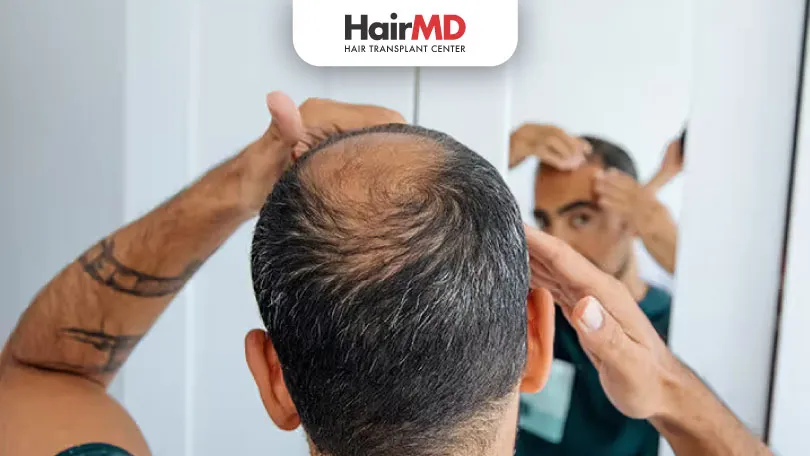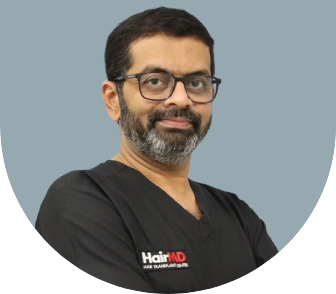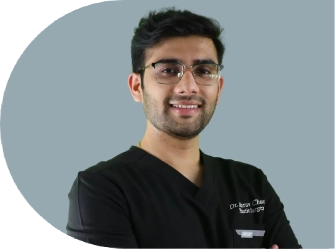
Finasteride is a popular medication used to treat male pattern hair loss by inhibiting the hormone DHT, which causes hair thinning. It is generally prescribed in 1mg doses daily and should be taken consistently for at least 3-6 months to see noticeable results. While it is effective in slowing hair loss and even promoting regrowth, side effects such as decreased libido or erectile dysfunction may occur in a small percentage of users.
What’s covered in the article?
- How to take finasteride for hair loss?
- What is hair loss?
- What is finasteride?
- How finasteride works
- How to take finasteride for hair fall?
- Side-effects of finasteride
- Conclusion
How to take finasteride for hair loss?
Male pattern baldness is a common type of hair loss which develops in many men at different stages of life. There are various medications and treatments are available to treat this male-pattern baldness. Most commonly prescribed US FDA approved medications are Minoxidil and Finasteride. Let’s try to see how to take finasteride for hair loss?
What is hair loss?
Male-pattern baldness is also called androgenic alopecia. Generally, caused by a combination of hereditary (genetic) and hormonal factors. A hair normally grows from a hair follicle. It then sheds down and a new hair grows from the follicle. As balding develops, eventually leads to smaller hair follicles and a thin hair which doesn’t grow out gradually. Male hormones causes these changes. It converts testosterone into other hormone called dihydrotestosterone.
With the arrival of 5-alpha-reductase inhibitors like Propecia and with the advancement in surgical hair restoration, the problem of hair loss has become lesser. However, along with this hope to deal with the stress of baldness, a number of fake products have also started to rule the market. And you are advised not to waste your time and attention over such products unless they are FDA approved.
What is finasteride?
Finasteride is the generic name of Propecia which was developed for relief therapy to the enlarged prostate. But, In recent years it has been introduced to quick fix the problem of male baldness pattern.
Finasteride used to treat male pattern hair loss by blocking the body’s production of a male hormone in the scalp that stops hair growth. It is not used to treat hair loss in women or children. So women and children stay away from this medicine.
How finasteride works
Finasteride is a prescribed to treat male pattern baldness i.e. androgenetic alopecia at the crown and in the middle of the scalp in men. Finasteride specifically lowers the levels of DHT in the scalp, thus helps to reverse the balding process.
1 mg of finasteride can effectively lower DHT levels in the scalp as low as 60% after having it daily. It is DHT which shrinks the hair follicle, which eventually leads to baldness. This 60% of reduction in DHT proved to stop the progression of hair loss in 86% of men after taking the drug during trials.
How to take finasteride for hair fall?
- Finasteride, an oral medication, usually taken once a day with or without food.
- You have to take one (1 mg) tablet every day, exactly as your doctor advises you to take.
- Remember to take your doses at the same time of day, as this will help you to remember to take finasteride on a regular basis.
- Anytime if you forget to take a dose on time, take it when you remember it.
- If you forget to take a dose any day, skip the missed dose. Don’t have a double dose to make up for a missed dose.
- Always follow the instructions of your doctor on how to consume finasteride. If you have any drug allergies inform your doctor about it, and if you on any medication.
Side-effects of finasteride
Finasteride may cause many side effects. If you face any unusual side-effects you should immediately re-consult your Dermatologists. You can face some of the following side-effects :
- Inability to have an erection
- Decreased desire for sex
- Problems with ejaculation
- Testicles pain
- Depression
Do You Know?
Nearly 250 Patients Visit HairMD
Everyday For Various Hair Concerns?
(Your journey to healthier and fuller hair starts here!)
Meet Our Dermatologists
Conclusion
Further Reading
Low-Cost Hair Transplant Clinics in Pune – Risks & Warnings
Discover why ultra-low-cost hair transplants in Pune are dangerous. Learn red flags, true costs, and how to verify surgeon credentials before risking your scalp health.
Top Hair Growth Treatments for Women: Your Ultimate Guide
Find effective hair regrowth treatments for women. Explore solutions like PRP, medications, and more to combat hair loss with expert advice from HairMD.
FUE vs FUT Hair Transplant – Pune Specialists Compare
Compare FUE vs FUT hair transplant techniques, costs, recovery, scarring, success rates, and ideal candidates. Learn which method suits you best in Pune.
Relation Between Masturbation and Hair Loss
Is there a relation between masturbation & hair loss? Uncover truth with our detailed analysis, separating fact from fiction to provide clarity on this common concern.
Have thoughts? Please let us know
We are committed not only to treating you, but also educating you.










